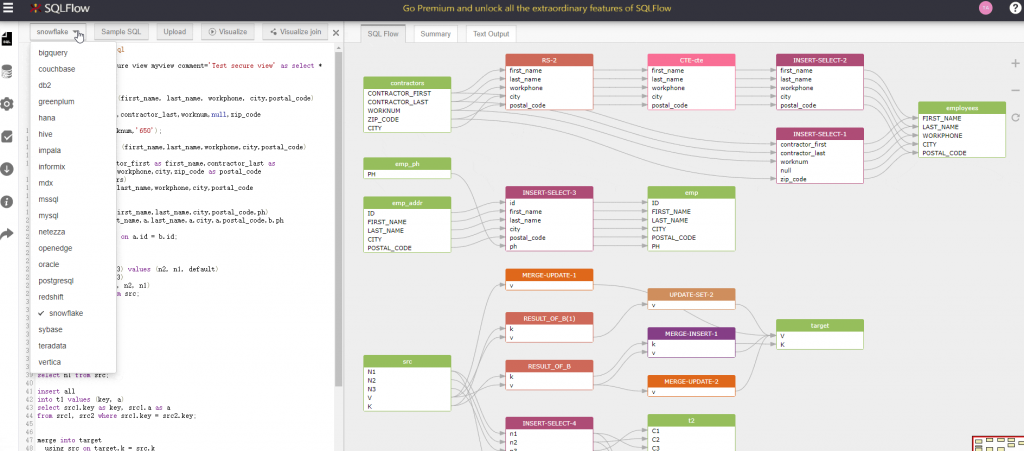Enhancing Data Governance with Gudu SQLFlow
Introduction
Effective data governance ensures data integrity, security, and compliance. Gudu SQLFlow provides comprehensive features that facilitate robust data governance practices by enhancing data visualization and management. Here’s how users can leverage Gudu SQLFlow to improve their data governance framework.
Key Features of Gudu SQLFlow
- Data Lineage Tracking: Gudu SQLFlow meticulously tracks data lineage, offering a clear map of data flow from source to destination. This transparency is crucial for understanding data transformations and ensuring accurate data tracking.
- Visual Data Mapping: SQLFlow converts complex SQL scripts into intuitive Entity-Relationship (E-R) diagrams. These visual representations make it easier to comprehend database structures, relationships, and dependencies, facilitating better data governance and management.
- Metadata Management: By integrating metadata from multiple database systems into a centralized repository, SQLFlow simplifies metadata management. This centralized approach enhances data accessibility and ensures comprehensive data cataloging.
- Compliance and Audit Support: SQLFlow helps organizations meet regulatory compliance requirements by maintaining detailed records of data lineage and transformations. These records are essential during audits and for fulfilling regulatory obligations, ensuring that all data processes are well-documented and traceable.
- Impact Analysis: The impact analysis feature allows users to predict the effects of changes within the database structure. This foresight supports proactive governance, enabling organizations to make informed decisions and mitigate risks effectively.

How People Use Gudu SQLFlow
- Automated Data Lineage: Users leverage Gudu SQLFlow to automatically extract data lineage from SQL scripts, stored procedures, and across different databases, including cloud and on-premise environments. This automation simplifies the process of tracking data flow and reduces the manual effort involved in documenting lineage.
- Data Lineage Visualization: SQLFlow’s ability to create graphical representations of data flows helps users visualize and understand complex data movements within their systems. This visualization aids in identifying data dependencies, which is crucial for impact analysis and troubleshooting.
- Data Quality and Consistency: By providing clear insights into data transformations, SQLFlow helps maintain data quality and consistency. Users can easily identify discrepancies and ensure that data standards are adhered to throughout the data lifecycle.
- Regulatory Compliance: Organizations use SQLFlow to maintain compliance with regulations such as GDPR and HIPAA. SQLFlow’s detailed lineage tracking and documentation capabilities ensure that all data handling processes are compliant with regulatory standards, providing peace of mind during audits.
- Collaboration and Knowledge Sharing: SQLFlow’s visualizations and documentation features facilitate better collaboration among data teams. Users can share insights, discuss data lineage, and work together to resolve data issues, fostering a collaborative data governance environment.

Conclusion
Gudu SQLFlow is an essential tool for enhancing data governance. Its robust features, including data lineage tracking, visual data mapping, metadata management, compliance support, and impact analysis, make it indispensable for organizations aiming to maintain high standards of data governance. By automating and visualizing data lineage, SQLFlow empowers users to manage their data assets effectively and ensure compliance with regulatory requirements.
For more information, visit Gudu SQLFlow.

